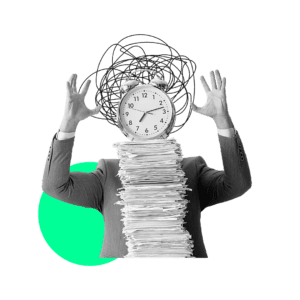Starting a company and structuring business is thrilling, scary, and, let’s be honest, intimidating.
You don’t need an MBA or formal business training to get started and expand a lucrative company;
however, there are certain decisions you’ll need to make right away, starting with deciding on your business structuring or doing the business structure.
What’s Business Structure?
Structure is one of the most important decisions you’ll make when starting a company.
Your choice of business structure meaning will be determined by a variety of factors, including the size and sort of company and how you intend to operate it.
Each method may have implications for key variables like tax liability, asset protection, and setup expenses.
The structure you choose is critical. The business structure example is the architecture you select, which is vital.
We can’t tell you which structure to pick because, if you need that sort of assistance, you should talk to a lawyer or an accountant.
If you ask yourself, what business structure should I choose and know what are business structures, there are a number of marketplace that you can choose from when starting or expanding your business including:
- sole trader – the business structure sole trader is simplest structure, gives you full control
- company – the business structure corporation is more complex, limits your liability because it’s a separate legal entity just like company structures in Australia.
- partnership – the business structure partnership is made up of 2 or more people who distribute income or losses
- trust – the business structure trust is where a trustee is responsible for business operations
Sometimes, there are also business structure comparison, because of the business structure pros and cons.
The form of business structure you choose for your firm will have an impact on how much you pay in taxes, the level of risk or liability to your personal assets (your house, personal savings), and even your ability to attract angel investors or venture capitalists which is emphasized in business structure Australia.
Business structure advantages and disadvantages
Sole proprietorships, partnerships, small company structures or corporations, and limited liability companies are the four most common organizational forms.
When establishing a new firm, one of the first decisions to make is which organizational structure to use.
The continuity, raising cash, and tax advantages and disadvantages of each company structure are discussed further in this article.
The legal position of the business’s, depending on business structure template, business structure management and business structure diagram.
Business structures in Australia is not so far from company format all around the world. Even the business structure definition is the same.
With changes in business structure, choosing the organizational structure of your firm may be difficult.
There are numerous financial, tax, and legal factors to consider when picking an entity, including how many business names per ABN.
Therefore, getting a good advise is important.
Let’s get into detailed
There are many different types of company structures out there.
And each has its own set of pros and cons. So, how do you choose the right one for your business?
Here’s a look at some of the most common structures and their pros and cons:
Sole Proprietorship:
A sole proprietorship is the simplest structure. You are the sole owner and operator of the business.
There’s no need to file any paperwork with the government. And, you get to keep all of the profits.
The downside is that you are also personally liable for all debts and losses incurred by the business.
This can put your personal assets at risk if the business fails.
Partnership:
A partnership is similar to a sole proprietorship, but there are two or more owners.
Partners share in the profits and losses of the business. And, they are each personally liable for the debts of the business.
Corporation:
A corporation is a separate legal entity from its owners. The corporation itself is liable for the debts and losses of the business.
And, the shareholders are not personally liable. This can offer some protection for your personal assets if the business fails.
The downside is that corporations are subject to more regulations than other company structures. And, they can be more expensive to set up and maintain.
Limited Liability Company (LLC):
An LLC is a hybrid of a sole proprietorship and a corporation. Like a corporation, the LLC offers some protection for your personal assets if the business fails.
But, like a sole proprietorship, it’s not subject to the same level of regulation.
The downside is that you may still be personally liable for some debts and losses incurred by the business. And, LLCs can be more expensive to set up and maintain than other business structures.
Do you need help getting started?
The structure that is best for you will be determined by your company goals.
If you want to expand the firm, take on investment, or acquire new buyers, among other things, incorporation may be the most effective route forward.
If you don’t want to take on any outside investment or new owners and just want to keep operating alone, a sole trader might be the way to go.
A company, nevertheless, should not be overlooked for the protection it can provide from liability.
However, if you have questions on tax consequences, whether you’re thinking about a corporation or partnership structure, we must stress that it’s always best to consult with your tax professional first.
In Oyster Hub, we have a Virtual Chief Financial Officer (Virtual CFO) that can help and guide you.
Expert in giving advice on putting up company and what structure to implement.
Adarsh Dutt, one of the Co-founders of Oyster Hub, won as Chief Financial Officer of the year last year and is ready to help you.




















